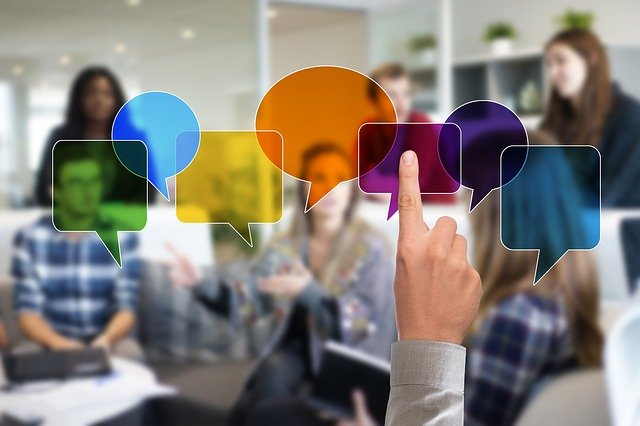Marketing emails should have specific goals and relevant calls-to-action: generating clicks, landing page visits, registrations, sales, and much more. That said, quite often, you might notice replies coming into specified mailboxes. While many of these will be auto-replies (such as the out-of-office messages), you will also see personal responses. So, how should you handle your marketing email replies?
Say No to “No-Reply” Inboxes
If you still use a “no-reply” inbox for handling marketing email replies, it’s time to change this approach. There are many reasons why a no-reply inbox isn’t a good practice. For example, no-reply email addresses can negatively impact your delivery rate. Email/inbox providers might flag messages with such reply inboxes as spam messages. The email marketing community has been discussing how no-reply addresses can get your emails blocked from delivery for a while now.
Also, think about how a no-reply email represents your brand. Is it in line with your mission and values? How would a missed reply impact your relationship with the customer? Most likely, your email recipients might feel unhappy and ignored (and yes, they will expect a response even if you say the inbox is unmonitored).
Is a no-reply inbox used in your marketing emails compliant? Many data privacy and protection regulations ask to include ways for customers to reach the sender. And they might, especially as they can now request information about the data you have collected about them. Would a no-reply inbox be fully compliant? While we haven’t seen any specific laws saying that no-reply inboxes shouldn’t be used, it’s definitely a questionable practice.
Not All Email Recipients are Technology Savvy
Not all of your email subscribers will look at the reply inbox name or the small print of your marketing emails indicating your reply handling mechanisms. However, many of them will know the essential functions of inbox management, including how to reply – clicking a reply button. So it’s logical for them to believe that they can reply to the sender directly: you sent them your beautiful newsletter, so they should be able to respond to it by replying.
You can also pick 2 PM as your go time. Typically, this is when people who work take a lunch break. Another viable option is early in the morning, around 6 AM. Workaholics like to start their day early by reading emails while still in bed.
ESP Reply Handing and Inbox Rules
Some ESPs (Email Service Providers) offer reply handling functionality, such as filtering the auto-responders. It’s rather inconvenient to get hundreds of out-of-office replies and manually look for genuine messages.
That said, many inbox providers allow you to create inbox rules – forwarding rules, sweeping rules, folder moving rules. Thus, to help you maintain your reply inbox, do create such rules! For example, a mailbox rule that finds and deletes all emails with a subject line that contains the “out-of-office” phrase will be handy. You’ll see how much simpler reply handling will get!
If you have a customer support team ready to manage the email replies, you should consider using their inbox for your marketing email reply address instead of forwarding the messages. However, on many occasions, there’s a one or two-person team sending many marketing emails and watching the responses come in. Therefore, once again, we recommend setting up logical inbox rules to help you filter the replies and find the urgent ones.
Unsubscribes Coming as Email Replies
Many email recipients are used to unsubscribing via a footer link. That said, there will be subscribers having a bad day or feeling unhappy or unsatisfied. They will feel the need to express their negative emotions and unsubscribe, potentially with an unpleasant email reply. For example, “I don’t want to be receiving your emails!” or “stop sending me these!”. Please take these comments as unsubscribe requests and opt these people out. That said, you’re definitely not alone in getting such replies – so don’t take them personally.
We should also mention that the COVID-19 pandemic brought many people online, even those who’ve never had an online presence before. Therefore, they might not be email-savvy and wouldn’t know how to stop marketing emails – so they’d simply ask to be opted out by replying to the email.
Some Emails will Require Your Attention
Among the genuine replies (and the unsubscribe requests), you might find questions about your products or services. In addition, your subscribers might reach out to you for technical help; they may want to submit a complaint or even leave a good review!
Your customer service team (or the dedicated individual) can help solve the issues or even support the customers through the purchase journey. Remember, even unhappy customers can be converted to happy and loyal ones – quick and helpful replies might just help you with that. Remember, email is seen as a two-way communication channel!
Customer Replies Can Bring Great Insights
Customer replies can actually become a great insight source into your customer database. For example, what are your subscribers asking when they reply? Are there any specific issues they’re raising or complaining about? If there are patterns and the questions and inquiries tend to repeat, maybe the marketing team can act upon them and enhance the current FAQ section to answer some of these enquiries.
Maybe, you can even take these insights and create blog posts to address these repeating issues or questions? Customer comments can be a good source for content ideas – as not only articles but also videos or infographics can be handy to those who look for answers.
Monitor Your Marketing Email Replies
As you can see, there are many benefits in monitoring your email reply inbox (and acting on the genuine responses!). By efficiently managing your email replies, you’ll help promote your brand to your customers and build customer relationships and trust. In addition to that, you’ll get great insights from your customer replies that can help you create useful content for your website and even your subsequent emails.


